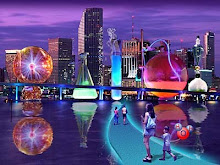- Synthesis: ( Direct combustion) two or more substances combine to form a single product. Example~Hydrogen gas and oxygen gas burn to produce water. 2H2+O2 2H2O
- Decomposition: Substance breaks down into two simpler substances. Example~potassium chlorate when heated comes apart into oxygen gas and potassium chloride. 2 KClO3 2 KCl + 3 O2
- Single Displacement (Replacement): one element fakes place of another in a compound. Example~Aluminum and iron trioxide.
- Double displacement (Replacement): positive and negative of two ionic compounds interchange. Example~calcium chloride and silver nitrate are reacted to form insoluble silver chloride.
- Combustion: Rapidly combines with oxygen to form oxides and release energy. Example~Hydrocarbon plus oxygen forms carbon dioxide and water.
Purpose:
- The purpose of this lab is to be able to see and identify the 5 chemical reactions rather than just being told what they are and what they do.
- Safety Goggles
- Safety Apron
- 4 small test tubes
- Zinc
- CuSO4
- Ba(No3)2
- Magnesium ribbon
- Bunsen burner
- Striker
- Test tube clasp
- H2O2
- MnO2
- test tube rack

Procedure:
- Put on Safety Gear.
- Obtain 4 small test tubes.
- In the first test tube, place a piece of zinc and about 1/2 mL of CuSO4 solution. Record observations.
- In the second test tube add about 1/2 mL Ba(NO3)2 solution to about 1/2 mL of CuSO4 solution. Record Observations.
- In the third test tube place a piece of magnesium ribbon. Add about 1/2 mL of HCl solution. Record Observations.
- Light a Bunsen burner (burning propane gas, C3H8). Record observations of the flame.
- In the fourth test tube add about 2 mL H2O2 solution. Lightly heat it. Record Observations.
- Add a pinch of MnO2 (catalyst) to the H2O2 solution. Lightly heat it. Record observations.
Discussion:
Through this entire experiment we are more capable of understanding the reactions, for we can now connect it with a visual presentation. This caused us to think more logically as we had to come up with our own equations and decided with reaction was being presented.
Conclusion:
Through each individual experiment we saw one of the 5 reactions and evidence of these reactions. We were capable of identifying the reactions from this evidence. The reaction descriptions, type, equation, and evidence of the reaction were placed in a data table for a presentation of the information that is more pleasing to the eye.





Nice colors and maybe get some Pictures
ReplyDeleteFirst of all, change the green to something legible. Also, it seems your chart(excel) is cut off. But the information is so far helpful in understanding the lab
ReplyDeleteok everything is nice like the layout and i really like the chart but maybe a conclusion section and discussion section to make it a top notch blog
ReplyDeleteNow that you have those sections if you talk about the specific results of each reaction you will have a top-notch lab report blog!
ReplyDeleteBright! i love it. you guys did a great job putting it together nicely. (the backround reminds me of pink lemondaide) [:
ReplyDelete